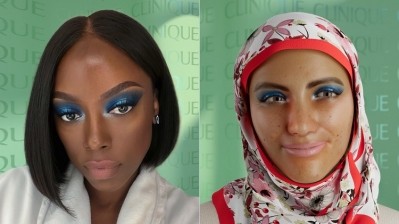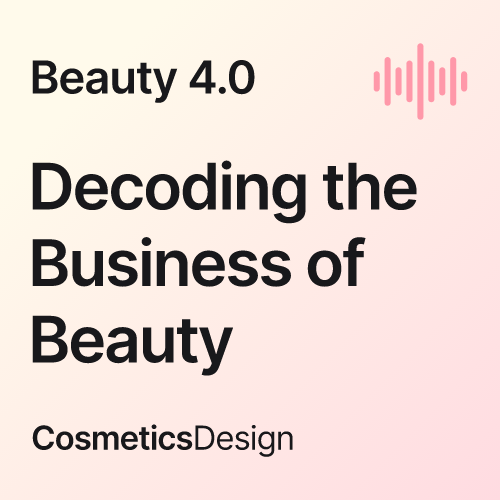Non-fungible beauty: What is the endgame for beauty NFTs in the metaverse?
![LG Household & Healthcare is the latest beauty company to dabble in the NFT craze, but one expert is questioning the future of beauty NFTs when considering the grand scheme of the metaverse. [Getty Images]](/var/wrbm_gb_food_pharma/storage/images/_aliases/wrbm_large/publications/cosmetics/cosmeticsdesign-asia.com/headlines/market-trends/beauty-nft-what-is-the-endgame-for-non-fungible-beauty-in-the-metaverse/13333129-1-eng-GB/Beauty-NFT-What-is-the-endgame-for-non-fungible-beauty-in-the-metaverse.jpg)
Non-fungible tokens (NFTs) are digital assets that are certified and traded on a blockchain. The underlying concept of NFTs is the proof of ownership of something irreplicable.
In the past year, we have seen a flurry of headlines of NFTs being sold for millions. They have made their way into a wide range of industries, including sports, luxury fashion, automotive and now beauty.
On March 14, LG Household & Healthcare (LG H&H) announced it was stepping into the realm of NFTs as part of its part of long-term consumer engagement strategy for its skin care brand belif.
The South Korean consumer goods company announced on March 14 that it will be selling NFTs of characters from the belif universe such as Duncan, who is based on Scottish herbalist Duncan Napier.
It will be minting 3,000 NFTs, which are set to go on sale this month on the OpenSea platform.
According to the firm’s press statement, this is part of the brand’s marketing strategy targeted at millennials and Gen Z consumer groups.
LG H&H believes that its NFTs can “form a strong fan base for the brand beyond simple product sales” with its novel storytelling medium. Furthermore, the belif NFTs also have tangible benefits, such as a special membership.
LG H&H is not the first company to create its collection of NFT artworks. It follows in the footsteps of brands such as Clinique, elf Cosmetics and NARS Cosmetics which have released their own collection of NFT artworks.
To coincide with National Orgasm Day on July 31, NARS debuted its first series of NFT artworks inspired by its cult classic Orgasm collection of products. NAR’s NFT launch was largely billed as a success, possibly thanks to the legacy of the NARS Orgasm brand.
“NFTs are supposed to mimic a product or something that has intrinsic IP value. In short, I think NFTs have a lot of value if it has good IP. Let’s look at sport trading cards – obviously, you would want Michael Jordon or Babe Ruth because these people are iconic with a very strong legacy,” explained Latif Sim, the founder of beauty brand Potions and the chief strategy officer of livestreaming tech firm BeLive.
While NARS may have had a successful NFT debut, not every beauty brand needs to jump on the non-fungible bandwagon, said Sim. In fact, he questioned whether beauty brands even needed to get into NFTs, considering the grand scheme of the metaverse.
“You have to think big picture. For example, Lamborghini has started launching NFTs and one of their approaches is to make NFTs for their iconic models. This could later translate into the Metaverse. Virtual worlds are hot right now. Ultimately, people can move into a virtual world where they can buy virtual properties, a home and the furniture for it, and a car. I think we are preparing for that kind of world. The end goal should be how an NFT can eventually get integrated into the meta world. Honestly, I cannot foresee a strong use case for beauty at the moment.”

![Three decades of gaming have proven that consumers want escapism, so beauty can and should follow suit [Getty Images]](/var/wrbm_gb_food_pharma/storage/images/_aliases/wrbm_medium/publications/cosmetics/cosmeticsdesign-europe.com/article/2022/05/30/metaverse-beauty-marketing-promise-in-escapism-immersive-experiences-and-creativity-says-swipe-back/15457420-1-eng-GB/Metaverse-beauty-marketing-promise-in-escapism-immersive-experiences-and-creativity-says-Swipe-Back.jpg)
![Beauty brands can play into the metaverse, bringing joy, better engagement, building communities and empowering consumers to become creative [Getty Images]](/var/wrbm_gb_food_pharma/storage/images/_aliases/wrbm_medium/publications/cosmetics/cosmeticsdesign-europe.com/article/2022/05/19/metaverse-future-in-beauty-brings-community-and-creativity-promise-say-estee-lauder-l-oreal-and-coty/15431533-1-eng-GB/Metaverse-future-in-beauty-brings-community-and-creativity-promise-say-Estee-Lauder-L-Oreal-and-Coty.jpg)


![Indus Valley is working to corner 30% of India's online premium boxed hair colour market. [Indus Valley]](/var/wrbm_gb_food_pharma/storage/images/_aliases/wrbm_tiny/publications/cosmetics/cosmeticsdesign-asia.com/article/2024/07/26/indus-valley-aims-to-secure-30-of-india-s-online-premium-hair-colour-market-with-organic-offerings/17594932-5-eng-GB/Indus-Valley-aims-to-secure-30-of-India-s-online-premium-hair-colour-market-with-organic-offerings.jpg)
![[Getty Images]](/var/wrbm_gb_food_pharma/storage/images/_aliases/wrbm_tiny/publications/cosmetics/cosmeticsdesign-asia.com/china/china-focus-latest-developments-in-china-s-booming-beauty-market25/17606695-1-eng-GB/China-focus-Latest-developments-in-China-s-booming-beauty-market.jpg)
![Kosé has launched makeup brand Visée in Singapore as part of plans to reinforce its position in SEA. [Visée]](/var/wrbm_gb_food_pharma/storage/images/_aliases/wrbm_tiny/publications/cosmetics/cosmeticsdesign-asia.com/headlines/business-financial/visee-singapore-kose-aims-to-enhance-brand-visibility-in-sea-with-new-launch/17587264-1-eng-GB/Visee-Singapore-Kose-aims-to-enhance-brand-visibility-in-SEA-with-new-launch.jpg)
![ble C&C is set on reinforcing its competitiveness in China’s beauty market. [Missha]](/var/wrbm_gb_food_pharma/storage/images/_aliases/wrbm_tiny/publications/cosmetics/cosmeticsdesign-asia.com/headlines/business-financial/able-c-c-aims-to-strengthen-competitiveness-in-china-through-online-expansion-kol-collabs/17591626-1-eng-GB/Able-C-C-aims-to-strengthen-competitiveness-in-China-through-online-expansion-KOL-collabs.jpg)

![LG H&H genetic study says 23 genetic regions affect natural skin tone. [Getty Images]](/var/wrbm_gb_food_pharma/storage/images/_aliases/wrbm_tiny/publications/cosmetics/cosmeticsdesign-asia.com/article/2024/07/23/lg-h-h-discovery-of-genetic-skin-tone-factors-in-east-asians-potentially-key-to-skin-radiance-developments/17587210-1-eng-GB/LG-H-H-discovery-of-genetic-skin-tone-factors-in-East-Asians-potentially-key-to-skin-radiance-developments.jpg)

![DR.CI:LABO expects brand-supplier partnerships gain more public prominence as consumers interest in skin care grows online. [Dr.Ci:Labo]](/var/wrbm_gb_food_pharma/storage/images/_aliases/wrbm_tiny/publications/cosmetics/cosmeticsdesign-asia.com/article/2024/07/22/brand-supplier-partnerships-will-come-to-the-fore-amid-the-online-skin-care-landscape-dr.ci-labo/17576755-1-eng-GB/Brand-supplier-partnerships-will-come-to-the-fore-amid-the-online-skin-care-landscape-DR.CI-LABO.png)